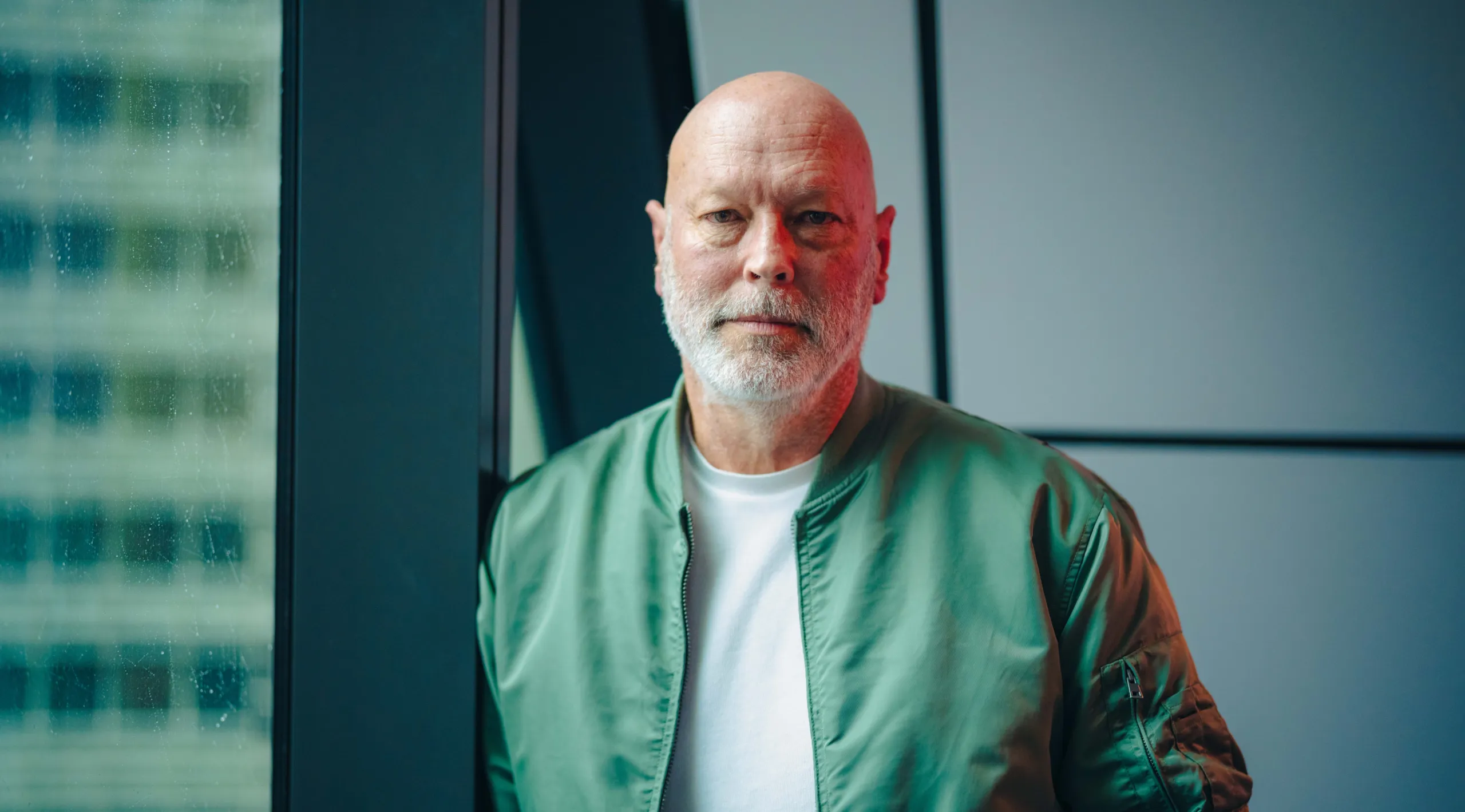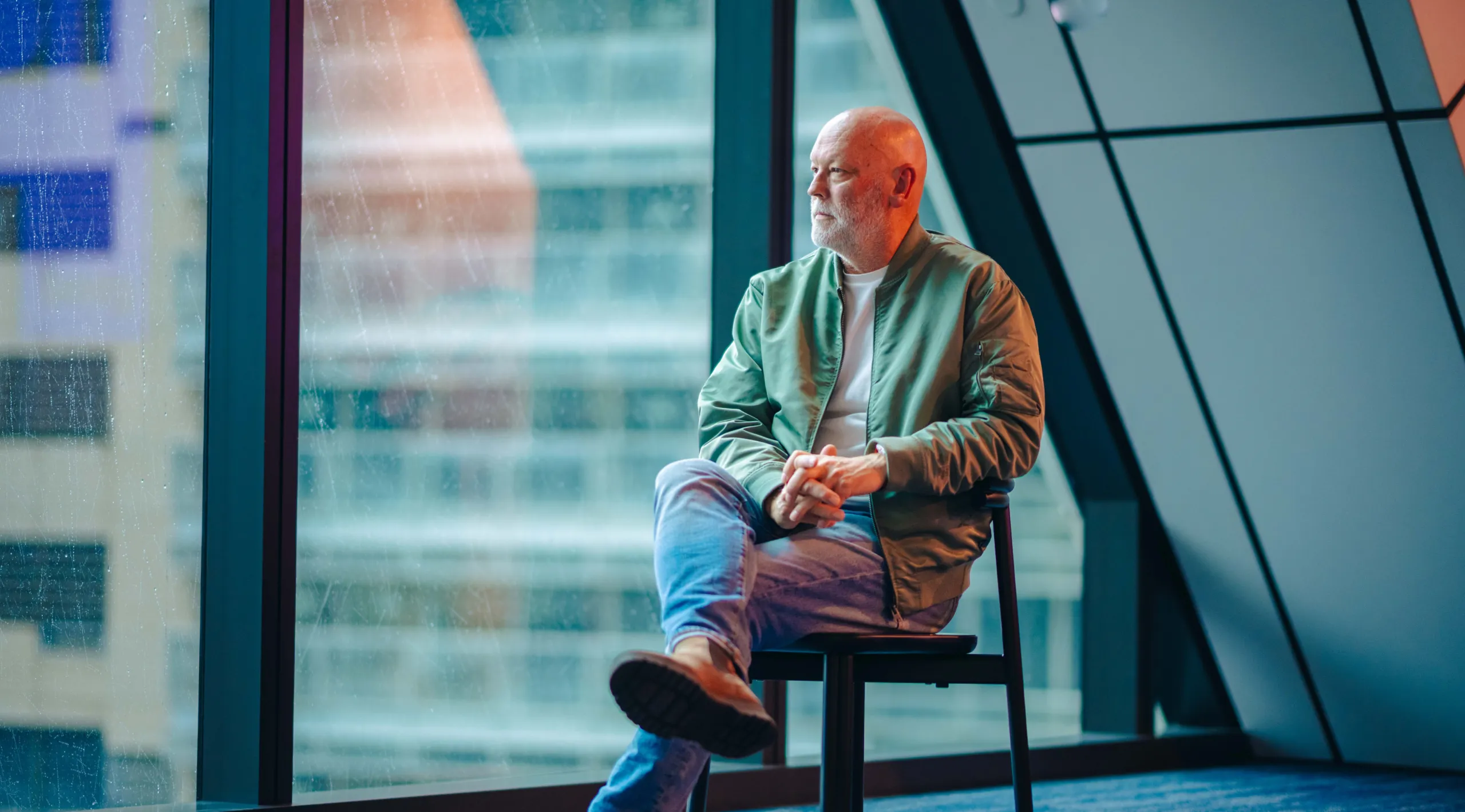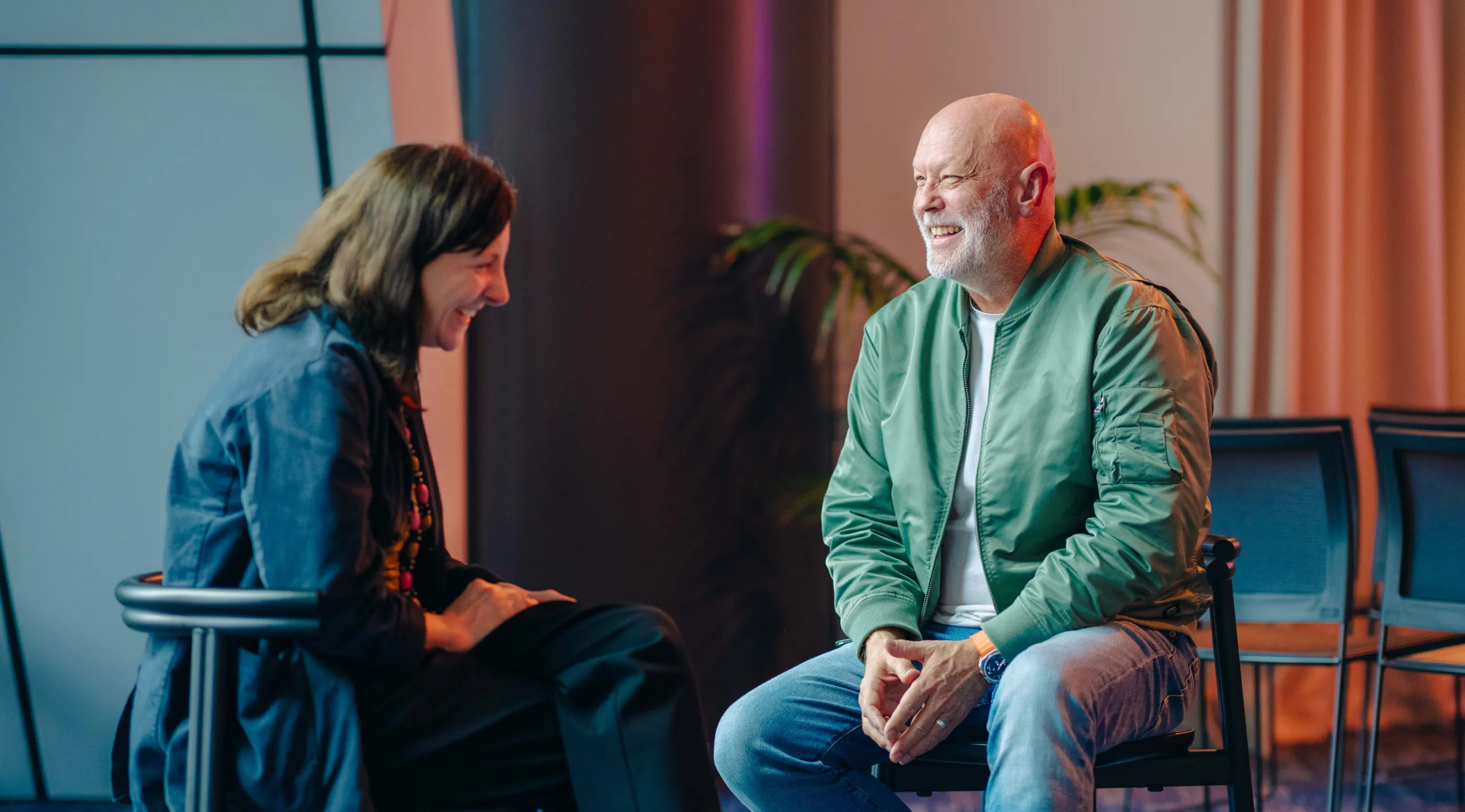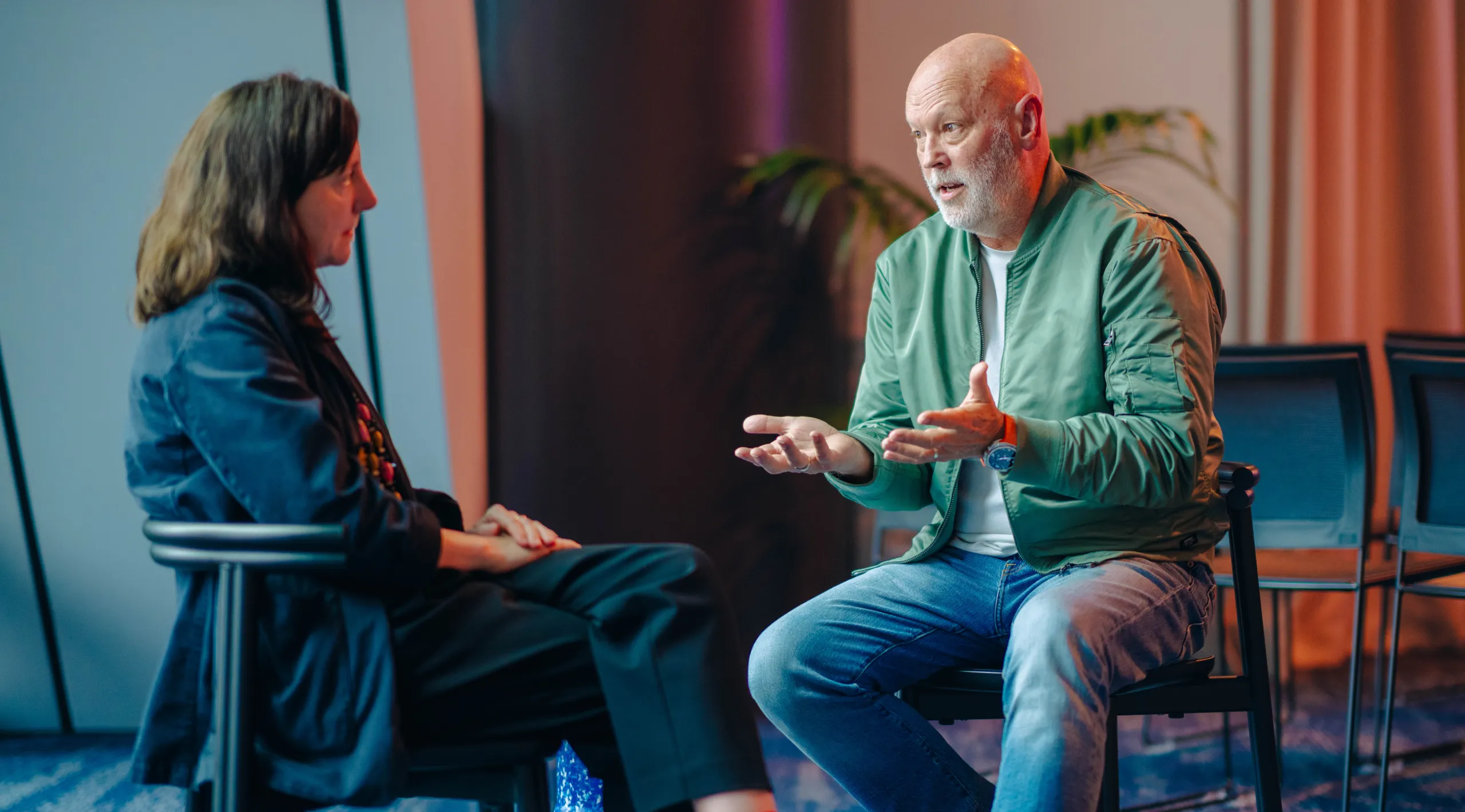After two decades in traditional media, Ashley McGrath is now a key player in UnLtd's innovative approach to social change. UnLtd harnesses the advertising industry's persuasive power to tackle systemic issues like youth incarceration, prevention of sexual abuse, and more, proving that passionate collaborators can drive meaningful transformation.
“The connection you get working with people who really care about making a difference, care about the world and the people in it, is a much deeper level of connection.”
Ashley McGrath, Chief Operating Officer, UnLtd
Lou Sergent, Managing Director, Today

Can you tell us a little bit about yourself to kick us off?
I spent about 20 years in fairly traditional media roles with companies like News Corp and Foxtel. But over time, and for a whole range of personal reasons, I found myself asking the same question a lot of people do: “Surely there’s more to life than just selling media or making money for advertisers and their clients?”
For me, the turning point was wanting to give back. It started very simply, at a local level, helping out with the school P&C, doing small, community-based work. But once you start, you see the impact. Not just the personal reward, but the difference it makes for others. And that’s what hooks you, and it builds from there.
Joining UnLtd nearly five years ago was really the escalation point. It confirmed the direction I knew my life needed to go. UnLtd gave me access to a network of people and opportunities that constantly remind me of the sheer potential to do good in the world.
And since then, I now chair Our Futures , which is an amazing initiative and opportunity. I’ve started my own charity in the inner west called Good in the Hood , and I’m just constantly looking to find ways to give back.
You have a very special gift for connecting with excellent people and bringing them together to find ways to collaborate on doing good.
When you look at the scale of the problems we’re facing, it can feel overwhelming. It’s easy to sit back and think, “How on earth can I possibly make a difference?”
That’s why I’ve become more and more convinced that the only real way to contribute is through collaboration. Because as passionate as I might feel, I know the world is full of other passionate people, people who bring different skills, perspectives, and resources. And when you bring them together, something pretty special happens. There’s an energy you can’t manufacture any other way.
What I’ve found is that working alongside people who genuinely care about making the world better creates a much deeper sense of connection than I ever had in the corporate parts of my career. It’s about more than just work, it’s about shared purpose.
There’s that lovely quote from Margaret Mead, “Never doubt that a small group of thoughtful, committed citizens can change the world. Indeed, it is the only thing that ever has."
That’s good, isn’t it? There’s another: "If you want to go fast, go alone. If you want to go far, go together"
But we shouldn’t underestimate how complex collaboration really is. It’s not as simple as saying, “Let’s all get together,” because people define success differently, and their passions and priorities don’t always align.
That’s the real challenge. People mostly accept that collaboration is valuable, even essential, but it comes with trade-offs. You have to compromise on power, on decision-making, on the way forward.
The difference in this space, though, compared to the commercial world, is that people driven by passion and purpose are often willing to make those trade-offs for the bigger good. They know that if you can get 80% of the way there together, that’s far better than not moving at all.
So yes, collaboration is messy and complex, but it’s also the thing I love most. It’s become a big part of how I work and how I live my life.

We have had the pleasure of partnering with UnLtd over the last year, and that has been so exciting and fascinating to see a really unique business model delivering real impact for communities. Tell us about UnLtd.
UnLtd is a pretty unique model. We’re a foundation that sits right in the middle of the media, marketing, and advertising industry.
We currently represent 28 charities that support disadvantaged young people. Traditionally, our role has been to harness the power of the industry to help those charities grow and increase their impact. Most often, that’s by creating large-scale pro bono advertising campaigns, which in turn helps them secure more funds, more visibility, and stronger brand awareness.
In practice, that means connecting the dots: we bring together charities, creative agencies, media agencies, and donated media inventory; everything from TV spots to outdoor and digital. Our role is the facilitator, the linchpin that makes it all work. And the outcome is extraordinary: a small charity can suddenly find itself with millions of dollars’ worth of promotion for its brand, its cause, or a specific fundraising campaign.
That model has been hugely successful, and we continue to do it really well. But the question we started asking ourselves was: Is it enough? Given the sheer scale and generosity of this industry, one built on the power of persuasion, surely we could do more. If we can convince people to buy products they don’t necessarily need, then surely we can also convince people to do good in the world.
That simple question is what led us to start working with Today. We began stepping back and asking: is supporting charity growth the limit of our role? Or can we go further, tackling the big, systemic issues directly, and shining a spotlight on the topics that matter most?
Tell me about some of those big issues that you’re tackling now.
This is a new space for us. We worked with Today to really sit with a simple but powerful question: “What’s the most good we can do as a business, as an industry?”
What became clear, and what’s unique to us, is our ability to change the narrative; to shift how people see these big issues. And shifting narratives is one of the most potent levers for change.
One of the first causes we’ve stepped into is Raise the Age. It’s about lifting the minimum age of youth incarceration in New South Wales from 10 to at least 14, which is the global standard. And even that sounds so young.
Yes, you can and should fight for policy change, and that’s critical. But more than anything, it’s about convincing people that it’s simply unacceptable to lock up a 10-year-old. I’ve got a child just a bit older than that, and as a parent, it really hits home. Once people hear the age, most agree straight away that it’s not okay. We saw that in our early campaign testing, the outrage was real, and people wanted to act.
The campaign itself has three parts. First, it’s about awareness, just letting people know this is the law. Many don’t realise that children that young can be incarcerated. The second part is the natural next question: If we don’t lock them up, then what? What’s the alternative? And the truth is, we need those alternatives. It costs between $700,000 and $1 million to keep a child in detention for a year. Imagine what that same money could achieve if it was spent on prevention or wraparound support instead. And the kicker is, it doesn’t even work, with 85% of those kids ending up back inside within 12 months. Once you’re exposed to the justice system that young, the cycle is incredibly hard to break.
So for us, this is about shifting focus: raising awareness, showing the alternatives, and lobbying for change. And for a first attempt, I think we’ve done well, but we’re always looking at how we can improve.
Our unique ability as an industry is to shape narratives and change minds. And with that ability comes responsibility. The truth is, most of our charity partners are doing vital work at the crisis end, helping kids who are already in real trouble. That’s essential. But if we don’t also invest in prevention and change the systems that funnel kids into crisis in the first place, we’ll just keep getting the same outcomes. This makes financial sense but is also the right moral step to take.
As the famous systems thinker Donella Meadows put it: “The system we have today is perfectly designed to produce the outcomes we’re getting.” If we want different outcomes, we need to change the system.
If we can convince people to buy products they don’t necessarily need, then surely we can also convince people to do good in the world. That simple question is what led us to start working with Today. We began stepping back and asking: is supporting charity growth the limit of our role? Or can we go further, tackling the big, systemic issues directly, and shining a spotlight on the topics that matter most?
Ashley McGrath

What are some of those systemic upstream challenges that are having such big impacts on young people?
The challenges we’re seeing are huge, and what really hits me is how much younger they’re starting. Some of our partners are now working with children as young as four who’ve experienced abuse. What used to be issues of trauma and recovery at 11 or 12, we’re now confronting at five or six.
To me, that says something really clear: we’re still trying to fix problems after they’ve happened, instead of putting enough focus on preventing them in the first place.
And of course, mental health doesn’t exist in a vacuum. It’s tied up with domestic violence, with parents struggling with drugs and alcohol, with the impact of social media, incredible growth in loneliness; there’s a whole tangle of complexities. But what makes it even harder is that the systems meant to help are so disconnected. Housing, education, mental health, justice, they don’t work together in a way that supports kids as whole people.
I always come back to the justice system as an example. Kids aren’t born wanting to commit crime. They end up there because system after system has failed them. And that’s the reality we need to face if we want things to change.
How does UnLtd work with your charity partners?
One of the first things we do is identify the charities that are not only in need of support but are also ready to benefit from it. That ensures we partner with organisations that have the infrastructure and ambition to truly leverage a large-scale campaign, charities that are ready to fly.
On the other side, our industry is full of extraordinary people eager to give back. Our role is to connect those people with the right partners and create pathways that channel purpose back into the industry itself. The most powerful outcomes always come when both the charity and the corporate partner gain equally from the collaboration.
Last year alone, the industry contributed more than $95 million in value to our charity partners. Much of that was donated airtime, such as billboards, TV, print, and digital, exposure that no charity could ever afford to buy. But the real gold lies in the expertise and effort of individuals across the industry, whose skills and creativity bring these campaigns to life.
Our job is to bring these resources together and that’s where we thrive. Whether it’s Dolly’s Dream, Indigenous Literacy Foundation, or The Pyjama Foundation, we help them amplify their message, raise funds, and shine a spotlight on the issues they champion.
Last year alone, the industry contributed more than $95 million in value to our charity partners.
Ashley McGrath

What I’ve loved observing is that as well as creating the ecosystem and infrastructure to support charities to deliver the impact that they’re pursuing, those charities are also often pursuing their own systems change and advocacy. Like the work that we’ve done with Youth Off The Streets—it’s been so inspiring to see the change that they’ve been driving at a policy level. That ripple effect of not just providing those supports to a charity, but creating the conditions for a charity to go on and pursue their own systems change efforts is just wonderful.
What we’re seeing is part of these charities maturing, their growing influence and their ability to collaborate with other organisations that share their vision for change.
Take Youth Off The Streets as an example. The visibility and support we’ve provided, alongside the many other contributions they receive, has helped position them as a credible and powerful voice.
That in turn draws in more collaborators. And suddenly, what began as supporting a single charity evolves into an ecosystem of changemakers: organisations and individuals who have engaged with the issues, been inspired, and are now stepping up to drive meaningful change
How do you engage hearts and minds to get behind these problems?
At UnLtd, our role is as a facilitator and collaborator. We don’t set the creative direction or make the final calls, we engage the expertise of the industry and invite their input. Our strength lies in bringing the right people together.
A recent campaign on the tragic issue of child sexual abuse shows why this approach matters. Nearly 80% of abuse is committed by someone known to the victim, a devastating and confronting truth. Telling that story demands enormous care. It has to be done with respect and nuance, while also forcing us to face an uncomfortable reality: statistically, it implicates the very communities we live in.
That’s why we rely on the full breadth of expertise. These stories can only be told effectively when advertising professionals work alongside charities who live this reality every day, young people who have the lived experience, and researchers who hold the evidence.
The best work we do comes from collaboration. When we centre purpose and invite as many experts as possible to the table, the result is work that not only communicates but creates real understanding and change.
The best work we do comes from collaboration. When we centre purpose and invite as many experts as possible to the table, the result is work that not only communicates but creates real understanding and change.
Ashley McGrath
What do you think the key ingredient is for social change?
It’s such a huge question, I suppose. Not that I’m shying away from it, but it is so... because it’s not a simple... there just isn’t one answer to any of this, otherwise it would have been solved ages ago.
For me, the key ingredient for social change is collaboration with purpose at the heart of it. Real change doesn’t come from organisations working in isolation or from chasing quick fixes. It happens when charities, communities, businesses, government, and young people themselves come together, each bringing a piece of the puzzle.
Systems change is never simple. But when you collaborate, you start to see the whole picture instead of just the symptoms. It’s where research meets lived experience, where corporate know-how meets community insight, and where the people most affected aren’t just consulted but actually shape the solutions.
My thoughts are, if we want lasting change, we’ve got to shift the question. It’s not just “How do we solve this problem today?” but “How do we change the system so the problem doesn’t exist tomorrow?”
If we want lasting change, we’ve got to shift the question. It’s not just “How do we solve this problem today?” but “How do we change the system so the problem doesn’t exist tomorrow?”
Ashley McGrath

